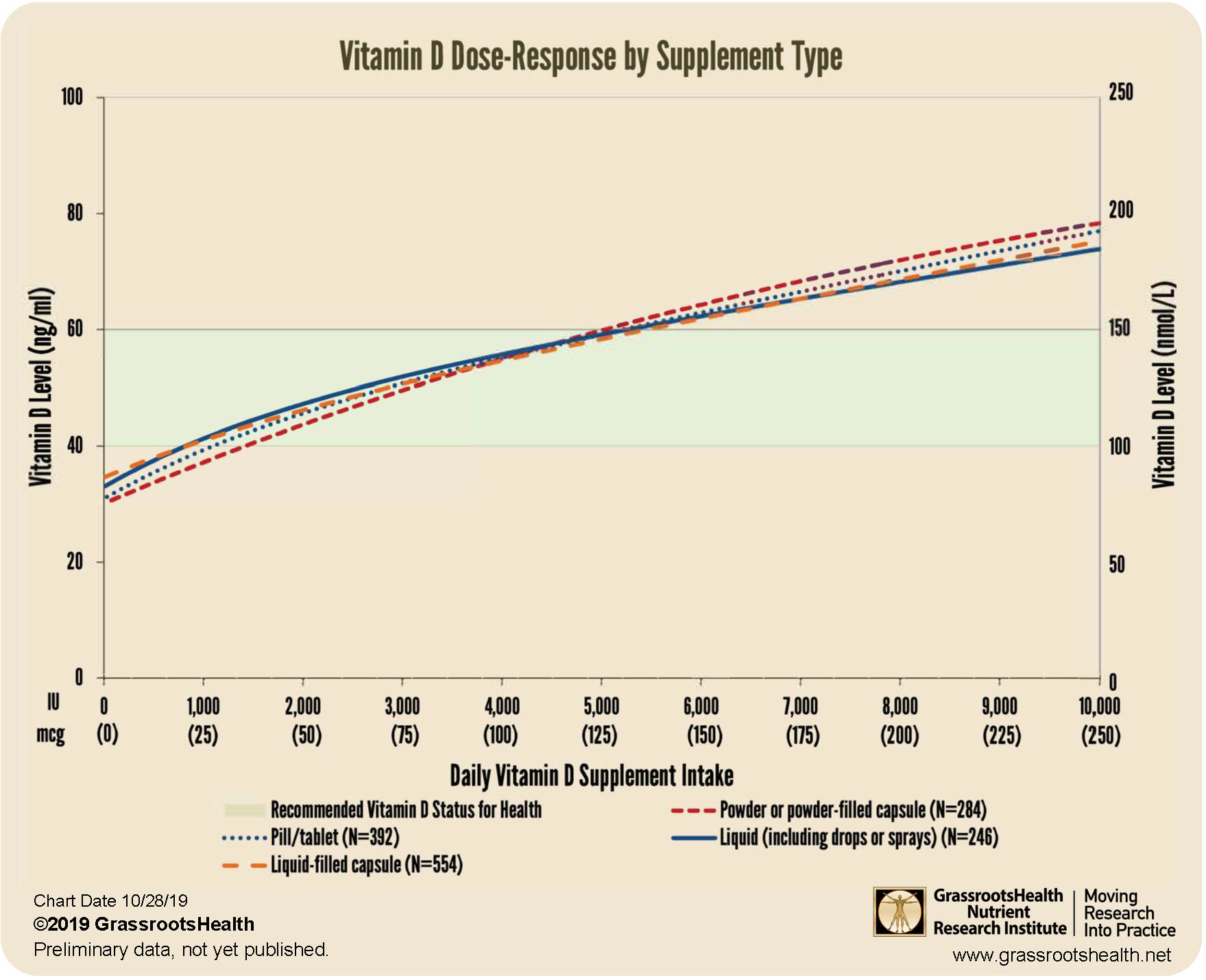Published on November 5, 2019
 Vitamin D supplements come in a variety of types including liquid-filled capsules, power-filled capsules, pills, and drops or sprays. In an earlier post we showed the percent of participants using each vitamin D supplement type. Today, we’ll explore whether certain supplement types raise vitamin D levels better than others.
Vitamin D supplements come in a variety of types including liquid-filled capsules, power-filled capsules, pills, and drops or sprays. In an earlier post we showed the percent of participants using each vitamin D supplement type. Today, we’ll explore whether certain supplement types raise vitamin D levels better than others.
We plotted the vitamin D intake dose and associated vitamin D level for participants using only one supplement type for at least 2 months. The chart below shows the dose-response curve for those taking liquid supplements (including drops or sprays), liquid-filled capsules, powder or powder-filled capsules, and pills or tablets. We found essentially no difference in dose-response between these supplement types.
There were not enough participants taking gummies, sublinguals or lozenges, or topical patches or creams to assess these supplement types.
How are your nutrient levels responding to supplementation?
Make sure you know your vitamin D level (with a target of 40-60 ng/ml or 100-150 nmol/L) and Omega-3 Index (with a target of 8% or higher) levels, as well as your levels of essential nutrients, such as magensium. Through GrassrootsHealth Nutrient Research Institute, you can also test your inflammation levels, including your level of hsCRP. Find out your levels today! Log on to the shop (click the link below) to get your tests and see for yourself if your level can be improved.
Make sure you track your results before and after, about every 6 months!
How can I track my nutrient intake and levels over time?
To help you track your supplement use and nutrient levels, GrassrootsHealth has created an online tracking system called myData-myAnswers. For each specific supplement, you can track what days you take it, how much, and many other details. This will help you know your true supplemental intake and what patterns of use work for you to reach and maintain optimum nutrient levels. Check it out today!







